-
EXECUTIVE SUMMARY
-
MARKET INTRODUCTION
-
Definition
-
Scope of the Study
- Research
- Assumptions
- Limitations
-
Objective
-
3.
-
RESEARCH METHODOLOGY
-
Overview
-
Data Mining
-
Secondary Research
-
Primary Research
- Primary
- Breakdown of Primary
-
Interviews and Information Gathering Process
-
Respondents
-
Forecasting Model
-
Market Size Estimation
- Bottom-Up Approach
- Top-Down Approach
-
3.7.
-
Data Triangulation
-
Validation
-
MARKET DYNAMICS
-
Overview
-
Drivers
-
Restraints
-
4.4.
-
Opportunities
-
MARKET FACTOR ANALYSIS
-
Value Chain Analysis
-
Porter’s Five Forces Analysis
- Bargaining Power
- Bargaining Power of Buyers
- Threat
- Threat of Substitutes
- Intensity
-
of Suppliers
-
of New Entrants
-
of Rivalry
-
COVID-19 Impact Analysis
- Market Impact
- Regional Impact
- Opportunity and Threat
-
Analysis
-
Analysis
-
GLOBAL IRON ORE MINING MARKET, BY TYPE
-
Overview
-
Iron Ore Mining Fines
-
Iron Ore Mining Pellets
-
Iron Ore Pellet Feed
-
Others
-
GLOBAL IRON ORE
-
MINING MARKET, BY END-USER
-
Overview
-
Construction
-
Transportation
-
Others
-
GLOBAL IRON ORE
-
MINING MARKET, BY REGION
-
Overview
-
North America
- US
- Canada
-
Europe
- France
- UK
- Italy
- Spain
- Rest of Europe
-
8.2.1.
-
Germany
-
Asia-Pacific
- China
- India
- Japan
- Australia
- Rest of Asia-Pacific
-
8.3.4.
-
South Korea
-
Rest of the World
- Middle East
- Africa
- Latin America
-
COMPETITIVE LANDSCAPE
-
9.1.
-
Overview
-
Competitive Analysis
-
Market Share Analysis
-
Major Growth Strategy in the Global Iron Ore Mining Market,
-
Competitive Benchmarking
-
Leading Players in Terms of Number
-
of Developments in the Global Iron Ore Mining Market,
-
Key developments
- New Product Launch/Service Deployment
- Merger & Acquisitions
- Joint Ventures
-
and Growth Strategies
-
Major Players Financial Matrix
- Sales & Operating Income,
- Major Players R&D Expenditure. 2022
-
COMPANY
-
PROFILES
-
BHP (Australia)
- Company Overview
- Financial Overview
- Products Offered
- Key Developments
- SWOT Analysis
- Key
-
Strategies
-
Rio Tinto (U.K.)
- Company Overview
- Financial Overview
- Products Offered
- Key Developments
- SWOT Analysis
- Key
-
Strategies
-
Northern Iron & Machine (U.S.)
- Financial Overview
- Products
- Key Developments
- SWOT Analysis
- Key Strategies
-
10.3.1.
-
Company Overview
-
Offered
-
Shree Minerals Ltd. (Australia)
- Company Overview
- Financial Overview
- Products Offered
- Key Developments
- Key Strategies
-
10.4.5.
-
SWOT Analysis
-
Mount Gibson Iron
- Company Overview
- Financial Overview
- Products Offered
- Key Developments
- Key Strategies
-
(Australia)
-
10.5.5.
-
SWOT Analysis
-
Vale (Brazil)
- Company Overview
- Financial Overview
- Products Offered
- Key Developments
- Key Strategies
-
10.6.5.
-
SWOT Analysis
-
ArcelorMittal (Luxembourg)
- Company Overview
- Financial Overview
- Products Offered
- Key Developments
- Key Strategies
-
10.7.5.
-
SWOT Analysis
-
NIPPON STEEL CORPORATION.
- Company Overview
- Financial Overview
- Products Offered
- Key Developments
- Key Strategies
-
(Japan)
-
10.8.5.
-
SWOT Analysis
-
POSCO (South Korea)
- Company Overview
- Financial Overview
- Products Offered
- Key Developments
- Key Strategies
-
10.9.5.
-
SWOT Analysis
-
Tata Steel (U.K.)
- Company Overview
- Financial Overview
- Products Offered
- Key Developments
- Key Strategies
-
10.10.5.
-
SWOT Analysis
-
Great Panther
- Company Overview
- Products Offered
- Key
- SWOT Analysis
- Key Strategies
-
Mining Limited (Canada)
-
10.11.2.
-
Financial Overview
-
Developments
-
Atlas Iron Works (U.S.)
- Company Overview
- Financial Overview
- Products Offered
- SWOT Analysis
- Key Strategies
-
10.12.4.
-
Key Developments
-
Iron Ore Company of Canada. (Canada)
- Company
- Financial Overview
- Products Offered
- Key Developments
- SWOT Analysis
-
Overview
-
10.13.6.
-
Key Strategies
-
Kudremukh Iron Ore Company (India)
- Financial Overview
- Products
- Key Developments
- SWOT Analysis
- Key Strategies
-
10.14.1.
-
Company Overview
-
Offered
-
Cleveland-Cliffs Inc. (U.S.)
- Company Overview
- Financial Overview
- Products Offered
- Key Developments
- Key Strategies
-
10.15.5.
-
SWOT Analysis
-
GFG Alliance
- Company Overview
- Financial Overview
- Products Offered
- Key Developments
- SWOT Analysis
- Key Strategies
-
(U.K.)
-
Eurasian
- Company Overview
- Products Offered
- Key
- SWOT Analysis
- Key Strategies
-
Resources Group (Luxembourg)
-
10.17.2.
-
Financial Overview
-
Developments
-
JSW (India)
- Company Overview
- Products Offered
- Key
- SWOT Analysis
- Key Strategies
-
10.18.2.
-
Financial Overview
-
Developments
-
Mineral Resources (Australia)
- Company Overview
- Financial Overview
- Products Offered
- Key Developments
- SWOT Analysis
-
10.19.6.
-
Key Strategies
-
Exxaro. (South Africa)
- Company
- Financial Overview
- Products Offered
- Key Developments
- SWOT Analysis
-
Overview
-
10.20.6.
-
Key Strategies
-
APPENDIX
-
References
-
11.2.
-
Related Reports
-
-
LIST OF TABLES
-
GLOBAL
-
IRON ORE MINING MARKET, SYNOPSIS, 2025-2034
-
GLOBAL IRON ORE MINING
-
MARKET, ESTIMATES & FORECAST, 2025-2034 (USD BILLION)
-
GLOBAL
-
IRON ORE MINING MARKET, BY TYPE, 2025-2034 (USD BILLION)
-
GLOBAL
-
IRON ORE MINING MARKET, BY END USER, 2025-2034 (USD BILLION)
-
TABLE 5
-
NORTH AMERICA: IRON ORE MINING MARKET, BY TYPE, 2025-2034 (USD BILLION)
-
NORTH AMERICA: IRON ORE MINING MARKET, BY END USER, 2025-2034 (USD BILLION)
-
US: IRON ORE MINING MARKET, BY TYPE, 2025-2034 (USD BILLION)
-
US: IRON ORE MINING MARKET, BY END USER, 2025-2034 (USD BILLION)
-
CANADA: IRON ORE MINING MARKET, BY TYPE, 2025-2034 (USD BILLION)
-
CANADA: IRON ORE MINING MARKET, BY END USER, 2025-2034 (USD BILLION)
-
EUROPE: IRON ORE MINING MARKET, BY TYPE, 2025-2034 (USD BILLION)
-
EUROPE: IRON ORE MINING MARKET, BY END USER, 2025-2034 (USD BILLION)
-
GERMANY: IRON ORE MINING MARKET, BY TYPE, 2025-2034 (USD BILLION)
-
GERMANY: IRON ORE MINING MARKET, BY END USER, 2025-2034 (USD BILLION)
-
FRANCE: IRON ORE MINING MARKET, BY TYPE, 2025-2034 (USD BILLION)
-
FRANCE: IRON ORE MINING MARKET, BY END USER, 2025-2034 (USD BILLION)
-
ITALY: IRON ORE MINING MARKET, BY TYPE, 2025-2034 (USD BILLION)
-
ITALY: IRON ORE MINING MARKET, BY END USER, 2025-2034 (USD BILLION)
-
SPAIN: IRON ORE MINING MARKET, BY TYPE, 2025-2034 (USD BILLION)
-
SPAIN: IRON ORE MINING MARKET, BY END USER, 2025-2034 (USD BILLION)
-
UK: IRON ORE MINING MARKET, BY TYPE, 2025-2034 (USD BILLION)
-
UK: IRON ORE MINING MARKET, BY END USER, 2025-2034 (USD BILLION)
-
REST OF EUROPE: IRON ORE MINING MARKET, BY TYPE, 2025-2034 (USD
-
BILLION)
-
REST OF EUROPE: IRON ORE MINING MARKET, BY END USER,
-
ASIA-PACIFIC: IRON ORE MINING MARKET,
-
BY TYPE, 2025-2034 (USD BILLION)
-
ASIA-PACIFIC: IRON ORE MINING
-
MARKET, BY END USER, 2025-2034 (USD BILLION)
-
JAPAN: IRON ORE
-
MINING MARKET, BY TYPE, 2025-2034 (USD BILLION)
-
JAPAN: IRON
-
ORE MINING MARKET, BY END USER, 2025-2034 (USD BILLION)
-
CHINA:
-
IRON ORE MINING MARKET, BY TYPE, 2025-2034 (USD BILLION)
-
CHINA:
-
IRON ORE MINING MARKET, BY END USER, 2025-2034 (USD BILLION)
-
TABLE 31
-
INDIA: IRON ORE MINING MARKET, BY TYPE, 2025-2034 (USD BILLION)
-
TABLE
-
INDIA: IRON ORE MINING MARKET, BY END USER, 2025-2034 (USD BILLION)
-
AUSTRALIA: IRON ORE MINING MARKET, BY TYPE, 2025-2034 (USD BILLION)
-
AUSTRALIA: IRON ORE MINING MARKET, BY END USER, 2025-2034 (USD
-
BILLION)
-
SOUTH KOREA: IRON ORE MINING MARKET, BY TYPE, 2025-2034
-
(USD BILLION)
-
SOUTH KOREA: IRON ORE MINING MARKET, BY END USER,
-
REST OF ASIA-PACIFIC: IRON ORE MINING
-
MARKET, BY TYPE, 2025-2034 (USD BILLION)
-
REST OF ASIA-PACIFIC:
-
IRON ORE MINING MARKET, BY END USER, 2025-2034 (USD BILLION)
-
TABLE 39
-
REST OF THE WORLD: IRON ORE MINING MARKET, BY TYPE, 2025-2034 (USD BILLION)
-
REST OF THE WORLD: IRON ORE MINING MARKET, BY END USER, 2025-2034 (USD
-
BILLION)
-
MIDDLE EAST: IRON ORE MINING MARKET, BY TYPE, 2025-2034
-
(USD BILLION)
-
MIDDLE EAST: IRON ORE MINING MARKET, BY END USER,
-
AFRICA: IRON ORE MINING MARKET, BY TYPE,
-
AFRICA: IRON ORE MINING MARKET, BY END
-
USER, 2025-2034 (USD BILLION)
-
LATIN AMERICA: IRON ORE MINING
-
MARKET, BY TYPE, 2025-2034 (USD BILLION)
-
LATIN AMERICA: IRON
-
ORE MINING MARKET, BY END USER, 2025-2034 (USD BILLION)
-
LIST OF FIGURES
-
RESEARCH PROCESS
-
MARKET STRUCTURE FOR THE GLOBAL
-
IRON ORE MINING MARKET
-
MARKET DYNAMICS FOR THE GLOBAL IRON ORE
-
MINING MARKET
-
GLOBAL IRON ORE MINING MARKET, SHARE (%), BY TYPE,
-
GLOBAL IRON ORE MINING MARKET, SHARE (%), BY END USER,
-
GLOBAL IRON ORE MINING MARKET, SHARE (%), BY REGION, 2022
-
NORTH AMERICA: IRON ORE MINING MARKET, SHARE (%), BY REGION, 2022
-
EUROPE: IRON ORE MINING MARKET, SHARE (%), BY REGION, 2022
-
ASIA-PACIFIC: IRON ORE MINING MARKET, SHARE (%), BY REGION, 2022
-
REST OF THE WORLD: IRON ORE MINING MARKET, SHARE (%), BY REGION, 2022
-
GLOBAL IRON ORE MINING MARKET: COMPANY SHARE ANALYSIS, 2022 (%)
-
BHP (AUSTRALIA) : FINANCIAL OVERVIEW SNAPSHOT
-
FIGURE
-
BHP (AUSTRALIA) : SWOT ANALYSIS
-
RIO TINTO (U.K.) : FINANCIAL
-
OVERVIEW SNAPSHOT
-
RIO TINTO (U.K.) : SWOT ANALYSIS
-
NORTHERN IRON & MACHINE (U.S.) : FINANCIAL OVERVIEW SNAPSHOT
-
NORTHERN IRON & MACHINE (U.S.) : SWOT ANALYSIS
-
FIGURE
-
SHREE MINERALS LTD. (AUSTRALIA) : FINANCIAL OVERVIEW SNAPSHOT
-
FIGURE
-
SHREE MINERALS LTD. (AUSTRALIA) : SWOT ANALYSIS
-
MOUNT GIBSON
-
IRON (AUSTRALIA) : FINANCIAL OVERVIEW SNAPSHOT
-
MOUNT GIBSON
-
IRON (AUSTRALIA) : SWOT ANALYSIS
-
VALE (BRAZIL) : FINANCIAL
-
OVERVIEW SNAPSHOT
-
VALE (BRAZIL) : SWOT ANALYSIS
-
FIGURE
-
ARCELORMITTAL (LUXEMBOURG) : FINANCIAL OVERVIEW SNAPSHOT
-
FIGURE 25
-
ARCELORMITTAL (LUXEMBOURG) : SWOT ANALYSIS
-
NIPPON STEEL CORPORATION.
-
(JAPAN) : FINANCIAL OVERVIEW SNAPSHOT
-
NIPPON STEEL CORPORATION.
-
(JAPAN) : SWOT ANALYSIS
-
POSCO (SOUTH KOREA) : FINANCIAL OVERVIEW
-
SNAPSHOT
-
POSCO (SOUTH KOREA) : SWOT ANALYSIS
-
FIGURE
-
TATA STEEL (U.K.) : FINANCIAL OVERVIEW SNAPSHOT
-
TATA STEEL
-
(U.K.) : SWOT ANALYSIS
-
GREAT PANTHER MINING LIMITED (CANADA)
-
: FINANCIAL OVERVIEW SNAPSHOT
-
GREAT PANTHER MINING LIMITED
-
(CANADA) : SWOT ANALYSIS
-
ATLAS IRON WORKS (U.S.) : FINANCIAL
-
OVERVIEW SNAPSHOT
-
ATLAS IRON WORKS (U.S.) : SWOT ANALYSIS
-
IRON ORE COMPANY OF CANADA. (CANADA) : FINANCIAL OVERVIEW SNAPSHOT
-
IRON ORE COMPANY OF CANADA. (CANADA) : SWOT ANALYSIS
-
KUDREMUKH IRON ORE COMPANY (INDIA) : FINANCIAL OVERVIEW SNAPSHOT
-
KUDREMUKH IRON ORE COMPANY (INDIA) : SWOT ANALYSIS
-
FIGURE
-
CLEVELAND-CLIFFS INC. (U.S.) : FINANCIAL OVERVIEW SNAPSHOT
-
FIGURE
-
CLEVELAND-CLIFFS INC. (U.S.) : SWOT ANALYSIS
-
GFG ALLIANCE
-
(U.K.) : FINANCIAL OVERVIEW SNAPSHOT
-
GFG ALLIANCE (U.K.) :
-
SWOT ANALYSIS
-
EURASIAN RESOURCES GROUP (LUXEMBOURG) : FINANCIAL
-
OVERVIEW SNAPSHOT
-
EURASIAN RESOURCES GROUP (LUXEMBOURG) : SWOT
-
ANALYSIS
-
JSW (INDIA) : FINANCIAL OVERVIEW SNAPSHOT
-
JSW (INDIA) : SWOT ANALYSIS
-
MINERAL RESOURCES (AUSTRALIA)
-
: FINANCIAL OVERVIEW SNAPSHOT
-
MINERAL RESOURCES (AUSTRALIA)
-
: SWOT ANALYSIS
-
EXXARO. (SOUTH AFRICA) : FINANCIAL OVERVIEW
-
SNAPSHOT
-
EXXARO. (SOUTH AFRICA) : SWOT ANALYSIS

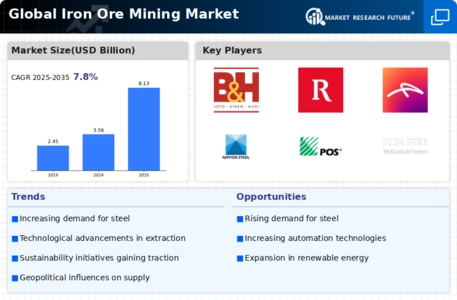
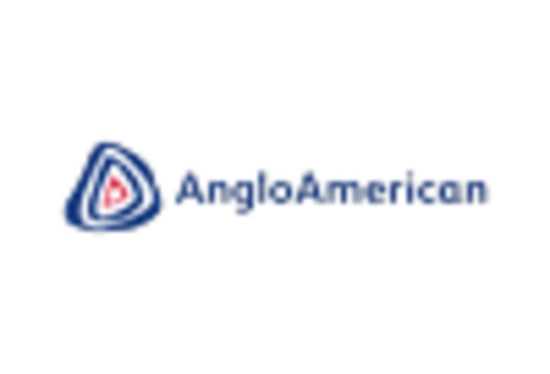
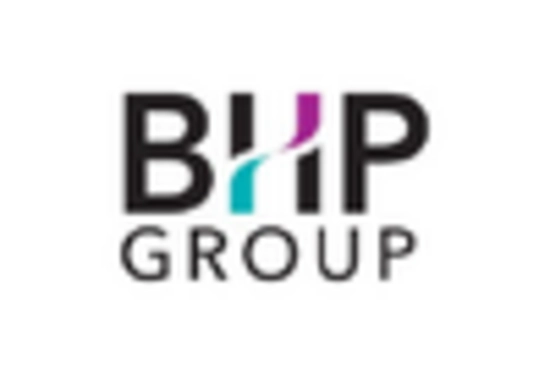
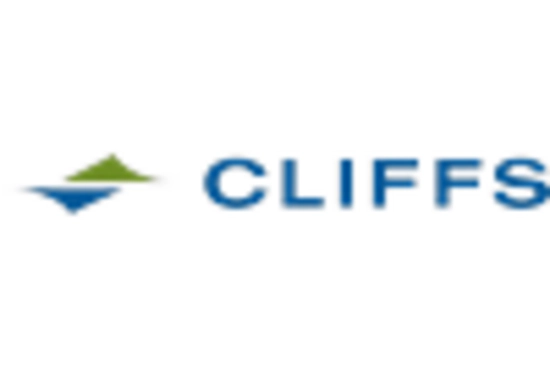
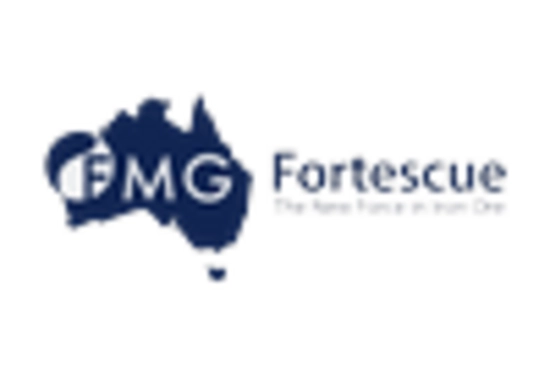
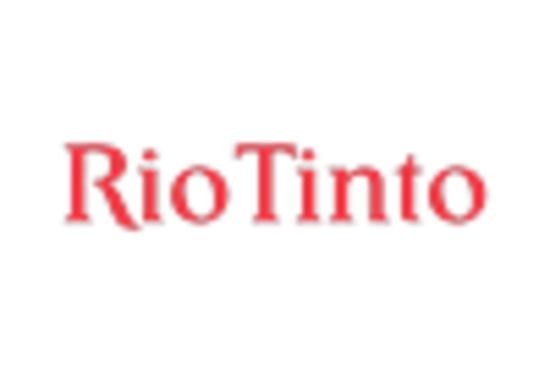
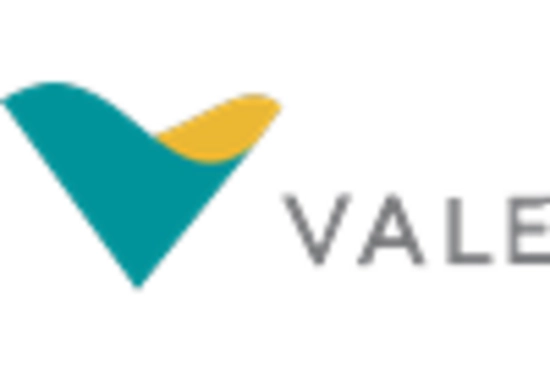

Leave a Comment